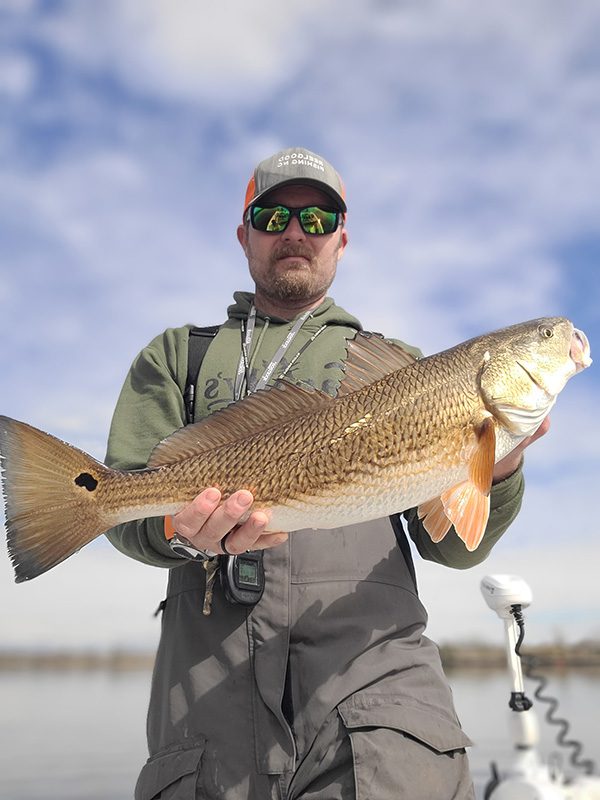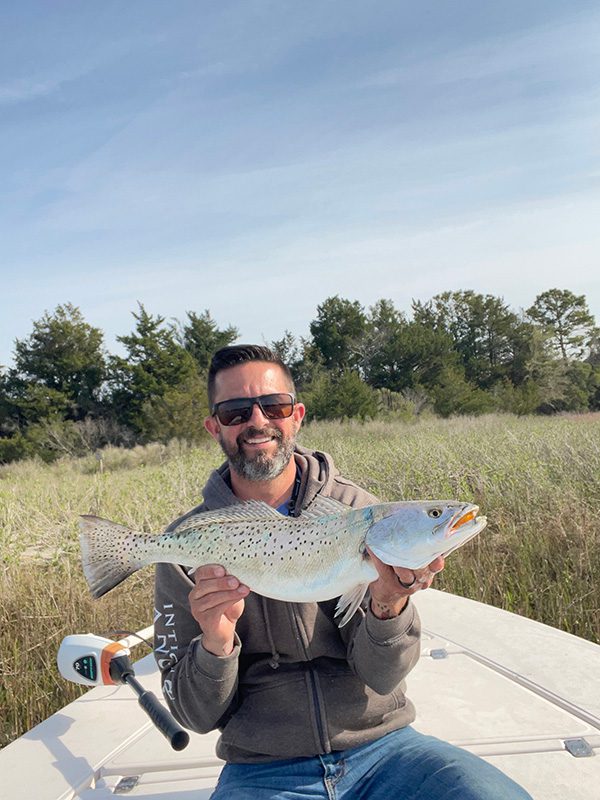Wrightsville Beach – March 2023
Jason, of Tex’s Tackle, reports that inshore anglers are finding the speckled trout to be more active with these stretches of warmer weather. If this general pattern can keep up over the next month, and we avoid strong weather swings, it could mean for an early spring fishing season.
Red drum action has been steady for anglers fishing cut baits and soft plastics for the schools that held over in the area.
There are black drum and sheepshead around hard structures near the inlet on out to nearshore reefs. Locating quality live crabs (for the sheepshead) has been a big determining factor for success in these trips, with some fish being caught on shrimp as a backup plan.
Surf anglers will be looking for the arrival of better numbers of whiting and pufferfish in the coming weeks.
Nearshore, there have been some early whisperings of Atlantic bonito showing out on deeper wrecks north of our area. If we can keep stable weather, they could push in over the next few weeks. The end of March turning to April is usually when we see the bigger nearshore changes, with the true arrival of bluefish, bonito, and possibly false albacore.
Ryan, of Intracoastal Angler, reports that inshore efforts are producing some red drum while casting Carolina-rigged shrimp or mud minnows around docks in the mainland creeks.
Black drum action is mixed in, and you should use the same tactic of bait fishing around structure.
Speckled trout are staged up in some of the pockets back in the creeks, where smaller artificial baits are more likely to trigger strikes.
Out at the jetty, anglers are catching some sheepshead that are held up tight to the rocks.
Nearshore anglers are finding a bunch of black sea bass action. The shallower areas are holding huge numbers, but they’re mostly small fish. Once getting out in the 80’+ range, anglers are seeing a much higher percentage of not only keepers, but jumbos in the mix.
There are king mackerel out in this 20-mile range, though fluctuating offshore water temperatures have them moving around a lot.
Taking advantage of the small, favorable windows and making the offshore run has produced blackfin tuna and some wahoo.
Through March, especially toward the end of the month, there will be changes in the region’s fishery. Bluefish are usually the first to arrive around mid-March, with Atlantic bonito and even false albacore not far behind.
Luke, of Coastline Fishing Charters, reports that the black drum bite has been the most predictable action, with fish schooled up around deeper boat docks and oyster bars. Fresh dead shrimp on a Carolina rig fished tight to these structures is putting decent numbers of fish in the boat.
The red drum bite is solid as well. Schools of redfish are staged up around similar hard structures, as well as in the skinny waters back in creeks and the marsh. These reds will feed on the same dead shrimp rigs, as well as on artificials such as Z-Man shrimp on lighter jig heads.
Speckled trout fishing has been steadily improving. Fishing soft plastics such as Vudu shrimp or Z-Man Trout Tricks has put up good numbers of strikes. Targeting areas along grass banks and oyster bars closer to the inlets have been great areas to start.
Zane, of Falling Tide Fishing Adventures, reports that there have been a lot of schooled wintertime redfish around. Anglers are finding action both in shallow bays and around docks in the mainland creeks. Lightly weighted swimbaits make for great scouting lures, as do topwater plugs. Anglers will do well looking for the smaller groups of fish versus the large winter schools as they have typically received less fishing pressure over the past months.
There are speckled trout around for those patient anglers deploying the “low and slow” retrieve with their artificial baits.
The nearshore reefs have been holding plenty of medium-sized tautogs and some sheepshead.
Over the next month, nearshore efforts should start to produce some larger sheepshead as they become more active and start to work back inshore.
Rick, of Living Waters Guide Service, reports that nearshore runs have been producing excellent black sea bass action, with larger grunts and vermilion snapper out on the deeper (100’+) structures.
March fishing is many times predicated on the weather windows. Finding positive conditions to make the Gulf Stream can really pay off, though, with good wahoo fishing and great opportunities to catch blackfin tuna while trolling, jigging, and popping jigs on the top.
If yellowfin tuna make a showing this year, it can be a bonus for those utilizing the same blackfin tuna tactics.
Jigging at the offshore ledges and rocks is great for African pompano and the larger class of amberjacks.
While running both out or in from the deep, keep an eye out for schools of Atlantic bonito and false albacore that are holding around the 10-mile area.
Ben, of Southern Run Fishing Charters, reports that nearshore runs to structure and ledges in the 10-25 mile range are holding really good numbers of keeper black sea bass. Just about any type of cut bait will get strikes from these aggressively feeding fish.
If the weather allows the run out to that high 60-70 degree water on the break, the area has produced some king mackerel action.
Longer Gulf Stream runs are still really productive this time of year. Good-sized wahoo and blackfin tuna are both the main catches, with some bonus sailfish in the mix.
Matt, of Johnnie Mercers Pier, reports that bottom fishing is still king as we push through these cooler months. Anglers have been catching a variety of pufferfish, whiting, and skates.







